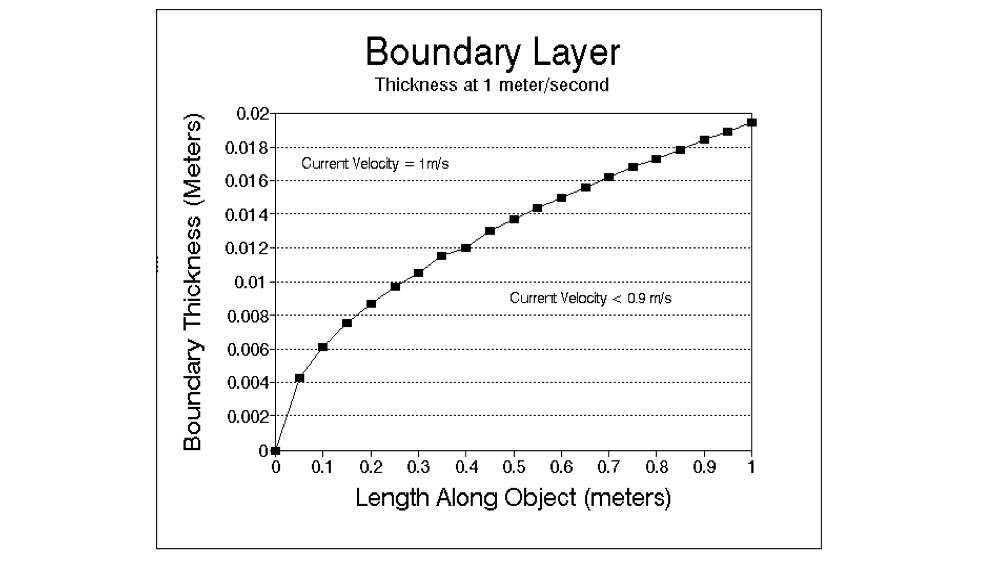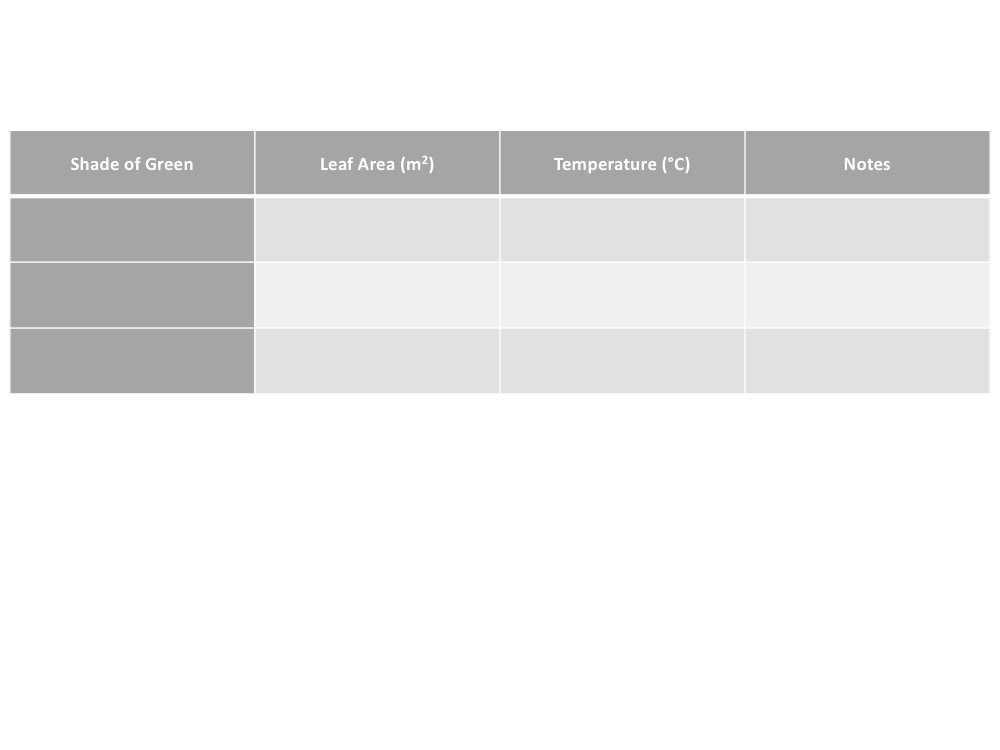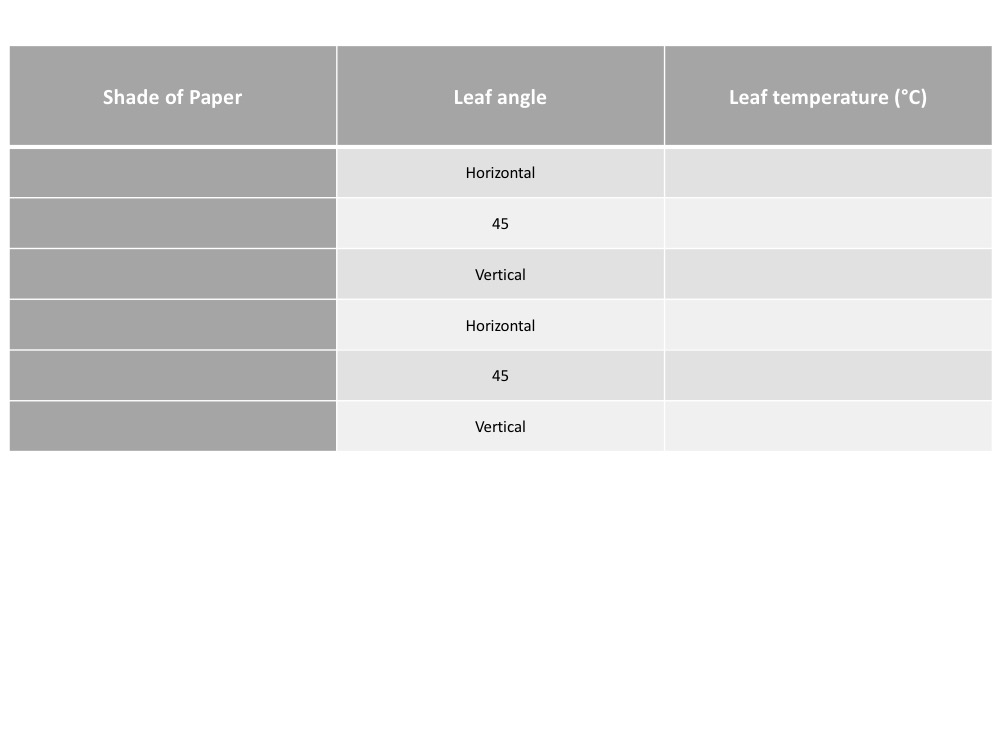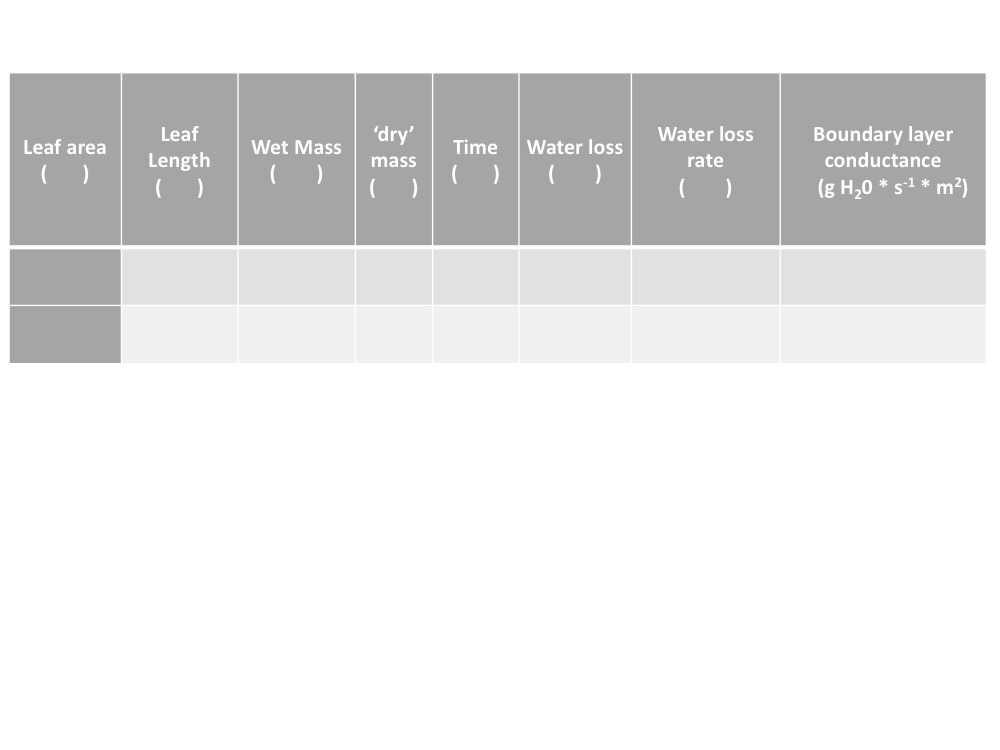FRS310
Assignment #9
Leaf Size, Angle, and Color
40 Points Possible
Introduction
Throughout the semester we’ve talked quite a bit about boundary layers and about how the angle of sun hitting a surface (either earth or a leaf) impacts the amount of energy absorbed. In this lab we are going to test the impact of leaf size on the boundary layer and the impact of leaf angle and leaf color on the energy absorbed by leaves.
Boundary Layer – Remember that the boundary layer is a layer of air directly adjacent to a surface that is unperturbed air, or air the is not moving very much. The still air of the boundary layer acts as a resistance to the movement of molecules and energy, making the passage of water vapor and heat extremely slow through this layer. If the boundary layer is very thin, then water vapor and heat can still move relatively quickly through this layer. But, if the boundary is extremely thick, then it really slows down the movement of heat and water from the surface of interest. We also talked briefly about the thickness of the boundary layer in relation to leaf size. The longer the air is in contact with a leaf surface (ie. larger leaf), the thicker the boundary layer gets (See figure below).

Leaf Angle – We talked about beam spread in the second or third week of lecture, and although we first discussed this concept in relation to the angle that the sun hits earth’s surface, the concept can also apply to leaf angle. If a leaf is positioned perpendicular to the incoming light (so a horizontal leaf), then it is going to absorbed the maximum amount of radiation. If, however, it is oriented at, say, a 45-degree angle relative to incoming radiation then the energy in each wave will be spread out over a larger portion of the leaf. When talking about conifer adaptations, we discussed how they could change leaf angle in order to minimize the amount of UV light absorbed by leaves. And we will also talk about beam spread as it relates to leaf temperature in desert ecosystems.
Leaf Color – In the next couple of weeks we’ll talk more about the adaptations of plants to desert ecosystems, and one of the adaptations is leaf color. To start, it is helpful to know that a perfect ‘black body’ is a theoretical object that absorbs all of the energy that ‘hits’ it, and the closer in color/shade to a ‘black body’ that an object gets, the more energy that it absorbs. So, leaves that are a lot lighter in color would reflect more of the incoming energy than dark leaves. Many species common to desert ecosystems have ‘canescent’ leaves, or leaves that have a silver or greyish appearance. One advantage of this color adaptation is that it decreases the energy absorbed by the leaf and may impact leaf temperature.
Objective
The objective of this lab activity is to investigate the impact of leaf size, angle and color on the temperature of simulated leaves. This activity corresponds with information we are covering in lecture about desert ecosystems, but also applies to plants growing in other ecosystem types.
Student Learning Outcomes
After completing this assignment students will be able to:
- Measure plant leaf temperature under different conditions.
- Describe the impact of leaf characteristics on leaf temperature.
- Interpret the relative impact of different plant strategies for tolerating high air temperature.
- Quantify and explain how boundary layer thickness adjacent to leaves differs depending on leaf size
Experiment #1
The experiment at this station will investigate the impact of leaf color on leaf temperature
- Cut three ‘leaves’ from the paper that are the exact same size, but from 3 different shades of green paper. Use ~1/4 of the page
- Hold them at the same angle (horizontal will work best) underneath the halogen light for 2-minutes.
- At the end of two minutes, but while holding the leaves under the light, measure the temperature of each ‘leaf’ using the infrared thermometer. Hold the thermometer ~1-2 inches away from the leaf to ensure that the ‘viewing angle’ of the thermometer includes only the leaf and not the table or floor beneath the leaf.
- Record your data in the table below
Note: think about how far your leaves are from the light and ensure they are all the same distance from the light. Varying the distance between your measurements will have a big impact on your results. Hint: it would be good to report how far each leaf was from the light.

Experiment #2
This experiment is designed to test the impact of leaf angle on the temperature of leaves to test how much adjusting leaf orientation could impact leaf temperature.
- Cut two pieces of paper that are the same size but from two different shades of paper. You can re-use paper if you want.
- Hold the leaves under the light for 2 minutes at one orientation
- Measure leaf temperature
- Again, keep the infrared thermometer relatively close to the ‘leaves’
- Repeat the steps 2 and 3 two times, changing the angle of the leaf each time
- Hold the two leaves at ~45 degree angle from horizontal
- Hold the leaves completely vertical
Note: think about how far your leaves are from the light and ensure they are all the same distance from the light. Varying the distance between your measurements will have a big impact on your results. Hint: it would be good to report how far each leaf was from the light.

Experiment #3
In this experiment you will calculate boundary layer conductance of two leaves that differ in size. You will wet the leaves up and then measure the water lost from each leaf during a set amount of time.
- Cut two pieces of paper out of filter paper:
- Cut one of them ~1-inch wide and as long as possible
- Cut the second one 1-inch wide by 1-inch long
- Measure one leaf at a time to ensure accuracy
- Wet one piece of paper
- Slowly drop water onto the filter paper until it just saturated (you don’t want the paper to be dripping wet).
- ‘sponge off’ the excess water with a paper towel
- Measure the mass of the wet paper prior to your measurement
- Make sure the fan is on setting 2.
- Hold the paper perpendicular to fan for 1 minutes.
- Quickly measure the mass of the paper again.
- Calculate the rate of water lost from the piece of paper.
- Repeat steps 3-8 on the same piece of paper to get an average value
- Repeat steps 3-9 for the second ‘leaf’.
- Calculate the boundary layer conductance of each leaf
Now, calculate the boundary layer conductance of each leaf based on the rate of water loss and leaf area.

Lab Report
You will need to write another lab report describing the impact of boundary layer, leaf angle, and leaf color on the environment of leaves. Write this as a lab group and make sure to list your name next to the section(s) you write.
Introduction
- Introduce the three concepts tested in this lab and describe how they may impact leaf temperature
- Feel free to use other sources of information (ie. internet), just be sure to cite your sources.
- Provide a hypothesis associated with each experiment
Materials and Methods
- Describe the methods used in each of the experiments
Results
- Describe the results you obtained from your experiments
- Make a figure to show the results of each experiment (1 figure / experiment)
Discussion
- Summarize your results
- Discuss the type of ecosystem you think each concept tested would be most important in impacting plant growth